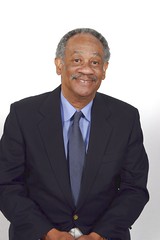Spirituality and emotional IQ can drive business
Boston Business Journal -
by Jay S. SidhuNoted philosopher, poet and artist John Ruskin said: "Education does not mean just teaching people what they do not know, it also means teaching people to behave as they do not behave."
Today, more than 150 years later, Mr. Ruskin's words still ring true, as it is no longer enough to just have a high IQ. In fact, new research at Harvard University reveals that 90 percent to 95 percent of success now depends upon Emotional Intelligence — EQ or EI — and only 5 percent to 10 percent on IQ.
Emotional Intelligence is developing universal values of dignity and trust gained through open and honest communications. It is adding intelligence to emotions and gaining wisdom.
My own personal journey has convinced me that you cannot reach your potential as a leader if you are not using your potential as a human being first. And you can't achieve your potential as a human being if you are not authentic.
And yet companies and organizations across this country invest about $25 billion a year on training for technical skills and very little on developing authentic leadership skills. I call it the "Great Training Robbery."
My experience has been that "authentic leadership" can be developed and should be considered as a viable option for you, personally, and your team members. Authentic leadership based upon emotional intelligence, leads to mutual trust and respect and sustainable superior performance.
There are four conditions of authenticity, and none of them will come as a surprise to you. In fact, they are traits our parents and mentors instilled in us during our development years. They are:
• The absence of defensiveness.
• The absence of manipulation or the presence of truthfulness.
• The presence of sincere empathy.
• The presence of values.
Couple those traits with what I identify as the five components of emotional intelligence-based authentic leadership and you are creating greatness.
The five components are:
• Self-awareness: The ability to recognize and understand your moods, emotions, drives and values as well as their realistic effect on others.
• Social skill: Proficiency in managing relationships and building networks, and ability to find common ground and build rapport.
• Self-regulation: The ability to control or redirect disruptive impulses and moods, the propensity to suspend judgment, and the ability to think before acting.
• Empathy: The ability to accurately understand the emotional makeup of other people and skill in treating people according to their emotional reactions in a way that maximizes trust.
• Values: A clear and consistent understanding of the role your values play in reaching goals and a propensity to consider the importance of the values of others in reaching goals in a way that builds trust.
Authentic leadership based upon values and EI creates a company that can grow several times faster than competitors. You will be the architect of a company that is built to last and has the potential to become a great company, a company that fosters a culture in which leaders truly become the sustainable competitive advantage.
At Sovereign Bank, we have a senior-level managing director of organizational development and a "chief learning officer" committed to assisting with leadership development.
We evaluate leaders not only for strong business skills, but outstanding human skills and passion for excellence. Our reward systems are based on achievement of results and leadership qualities.
The bridge from a revitalized human engine to a formidable business engine is to develop procedures to speedy decisions, communicate timely information through the organization, provide quick and effective feedback and evaluate managers on openness, candor and self-confidence.
I firmly believe that spirituality leads to character development — the human spirit of love, compassion, forgiveness, tolerance, and contentment, a sense of harmony, humility and a sense of responsibility.
It is a journey worth taking.
JAY S. SIDHU is chairman, CEO and president of Sovereign Bancorp, parent of Sovereign Bank New England. He speaks nationally on his strong beliefs on the reward of spirituality. The Sixth International Symposium on Spirituality and Business, "Spirituality, Ethics, and Profit: Integrating the Human Spirit and Values into the Workplace," will take place March 20-21 at Babson College.

